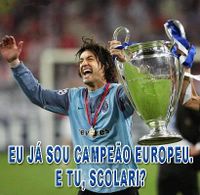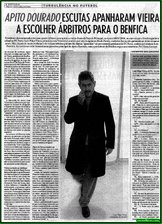The City and the Writer: In Porto with Rosa Alice Branco
If each city is like a game of chess, the day when I have learned the rules, I shall finally possess my empire, even if I shall never succeed in knowing all the cities it contains. Italo Calvino, Invisible Cities
Can you describe the mood of Porto as you feel/see it?
Every time I describe my feelings I am saying something about Porto. Every time I describe a city I am saying something about Venice.
The mood of Porto varies in accordance with the sun and the rain. On days when the sun is absent, the gray granite tinges the city with sadness. I take on the color of Porto each day. When there is sun, Porto awakes as cheerful as a teenager. The light of Porto is a warm yellow that penetrates the bodies of those who stand at the window. I was born and still live close to the sea. I don’t know how else to live. At the moment, I am living in Foz Velha, at the mouth of the river. There is a broad promenade facing the sea and lower, close to the beach, esplanades are open all year round. My life consists of rocks, sand, sea, and gulls. There I am, and the image of myself that I carry with me wherever I go.
What is your most heartbreaking memory in this city?
Perhaps I am afraid of losing Porto, its soul, if I speak of how it was. Or perhaps, speaking of what it will become, I have already lost it, little by little. Perhaps I am afraid of losing Venice all at once, if I speak of it, or perhaps, speaking of other cities, I have already lost it, little by little.
When the streetcars disappeared from the city. Everyone has stories about streetcars criss-crossing the city, noisy and bustling, watching them go by or taking one. It is all part of a solar day in Porto, especially since here the streetcars are painted yellow. They are poetic objects, especially in this city, where a poet from here used to read poetry aloud while travelling along. Even the fishmongers liked to listen to him. Pedro Homem de Mello (a popular poet) was completely at home in the streetcar. When they abandoned the streetcars, the tracks remained dead, for many years. Tourism brought about a miracle: the return of the streetcar—one line—at least one—where the pulsing yellow makes its way alongside the Douro River.
What is the most extraordinary detail, one that goes unnoticed by most, of the city?
Only in my accounts was Nathalie able to discern, through the walls and towers destined to crumble, the tracery of a pattern so subtle it could escape the termites. Only in Marco Polo's accounts was Kublai Khan able to discern, through the walls and towers destined to crumble, the tracery of a pattern so subtle it could escape the termites.
Have you ever tried to walk through the streets of a city where you love looking upward— where the rooftops meet the sky? I do this sometimes, alone or with someone. One discovers another city. The rooftops of some parts of Porto seem to be of crystal because of the skylights. Very few people know the Palácio das Sereias (Palace of Mermaids) at the bottom of Bandeirinha. Beside the beauty of the entrance, shaped from two mermaids of stone that support the house on their heads—the view of the Douro is terribly beautiful. And the houses that descend on terraced land toward the Douro, are topped by skylights, that bring the luminousness of the river up to the sky.
What writer(s) from here should we read?
Why do you speak to me of the stones? It is only the arch that matters to me. I answer: "Without stones there is no arch.”
António Nobre, Eugénio de Andrade, Egito Gonçalves, Fernando Guimarães, Mário Cláudio, Amadeu Baptista—the list goes on. But these are the ones I enjoy reading most. In some texts, the fabric of the city offers itself mysteriously and, sometimes, anonymously, in places of reference that everyone shares, romanticized by António Nobre, illuminated by the white words of Eugénio de Andrade, questioned by Fernando Guimarães, revisited by the lyricism of the quotidian of Egito Gonçalves, seen in filligree by Mário Cláudio, lived in the gut of Amadeu Baptista’s writing.They also are the building stones of words with which the arches of the city are made.
Is there a place here you return to often?
You see, Nathalie, each time we half-close our eyes, we are allowed to return here, to gaze at the silken sands and the green sea, to feel what we are seeing and experiencing, to draw what is close, to contemplate it all from a distance.
Yes, yes, there is. The esplanade at Praia da Luz. I read and write at Praia da Luz whenever I can. Of all the esplanades along the sea, that is where the music is best and where there is such energy, that as soon as I get there I feel that’s where I belong . . . the sea just a few feet from the wooden tables and chairs, the Atlantic, so serene, and at times, so implacable. Every day it’s a different place since the horizon changes with the distant boats waiting to enter the harbor, with the moods of the sea, with the slant of the sunlight. The light bathing us is never the same and the gulls are always unpredictable.
Is there an iconic literary place we should know?
In vain, Nathalie, shall I attempt to describe Lello, the bookshop of high stained-glass (. . .) but I already know this would be the same as telling you nothing. Lello does not consist of this, but of relationships between the measurements of its space and the events of its past . . . In vain, great-hearted Kublai, shall I attempt to describe Zaira, city of high bastions. The city does not consist of this, but of relationships between the measurements of its space and the events of its past.
There is one spot more beautiful and more iconic than any other—the Lello bookstore. It dates from the nineteenth century, and is an Art Nouveau jewel with Neogothic touches and marvelous stained-glass windows. It is called the cathedral of books and Enrique Vila-Mata considers it the most beautiful bookstore in the world.
I don’t know if it is the most beautiful or if it is among the three most beautiful, as a well-known magazine claimed earlier this year. I do know that it would be indescribable, even for Italo Calvino, because the improbable beauty of its architecture surrounds us with a most beautiful otherness and the dimension of the book finds here its fulfillment.
Are there hidden cities within this city that have intrigued or seduced you?
From one part to the other, the city seems to continue, in perspective, multiplying its repertory of images.
Yes, many unpredictable cities, that unfold in space and in time, yet Porto remains a single city, whole and complete. When I discovered Café Piolho, I knew it was totally different from everywhere else I know in Porto, or in other cities. It was a few years before the revolution of the April 25, 1974. At the height of the dictatorship, almost everything was provincial and repressed. There, in the Piolho, and outside it, there was a swarm of ideas, hands, arms, embraces, steaming coffee cups. The Piolho had escaped provincialism, there were anarchist touches, something of the beat generation, all in opposition, all of them laughing for tomorrow. It was the cultural space where ideas were free, it was a small cafe that overflowed into the city. Even today the Piolho is a cafe different from all others, a cafe where new generations find their identity, and where a few years ago, we commemorated in poetry Piolho’s hundredth anniversary.
And then there are the islands of Porto. Most of them are invisible, hidden behind great doors. There, inside, a multitude of little houses that line up and cross each other to go to the common bathroom. It is an addictive concupiscence. Sometimes, people suffer from conditions of privation; others almost die from having to leave. There are people who live in the islands and have enough money to live in other houses with a higher rent. In the islands, people are never alone, even if they want to be. They are noisy, and what happens in one house spreads to all the others. In the islands, a secret doesn’t exist, but its perspectives are multiplied as by the play of mirrors. In the end, in some way the Ribeira is also one of the most seductive cities hidden within Porto. There we are carried off to the Middle Ages, to the solid stonework of its houses and its narrow streets. Ribeira, today a tourist zone, but still harboring the fishermen of which the neighborhood consisted, bends toward the Douro, while the latter bends toward the sea. The view, by (the) day and night lights, at the foot of the D. Luís I bridge, is of an extreme liquid beauty and we ask ourselves, as in Calvino’s Invisible Cities, if this vision indeed exists.
Where does passion live here?
The city appears to you as a whole where no desire is lost and of which you are a part, and since it enjoys everything you do not enjoy, you can do nothing but inhabit this desire and be content.
I would ask instead: where doesn’t passion live in Porto? Porto seems a reticent, sober city, principally due to the English influence. But in fact it is really something else: Porto is a thoroughbred city, like a horse. With its mane high up, it never allows itself to be tamed. It is always saying to the visitor: if you want me, first you have to know me.
And as we learn to know Porto we fall in love with its haughty, disdainful, almost stony, yet very human race. The light leaves us crazed. Each day that we pass through it, we discover ourselves in it and fall in love with it, in a state of grace. Porto is a city that reinvents itself on its oldest streets and gives us the sensation that we are always being brought to life. And when we fall in love with someone, Porto becomes an accomplice and all its urban voluptuousness opens to us: the Ribeira with its churches, the Palace of the old Exchange and the Ferreira Borges Market, the downtown which always is climbing toward the heights, the esplanades along the coast listening to the secrets of the sea, the riverside promenades with their view of the other bank, the City Park, the markets, the taverns with their tidbits, the music of the night time bars. To live Porto is to always be the mistress of both Portos, and those words that love me/us in its poetry.
What is the title of one of your poems about Porto and what inspired it exactly?
Your gaze scans the streets as if they were written pages: the city says everything you must think, makes you repeat her discourse, and while you believe you are visiting Porto you are only recording the names with which she defines herself and all her parts. Your gaze scans the streets as if they were written pages: the city says everything you must think, makes you repeat her discourse, and while you believe that youare visiting Tamara you are only recording the names with which she defines herself and all her parts.
One of them is a triptych dedicated to the city of Porto that appeared in the book A Gaze at the Feminine, funded by Porto 2001, The European Capital of Culture. It consisted of poems entitled, “Steps Without Memory,” “Back to the Sea,” “Worn Out Portrait in the Guts.” Later, they were included in my collected poems Spelling Out the Day and appeared in literary magazines in the USA in translations by Alexis Levitin. But the poems were born from a poem I never finished, called “The Palace of the Mermaids.” What inspired me was the city leaning over the river, there where its waters flow into the sea. Right there, in Foz, contemplating the lights of the houses climbing up the other bank of the river. I imagine what I might see over there in Afurada, the turf of fishermen. But the other bank is also, in the poem, the vision of the poet, in Porto, writing the other bank of the world.
The three poems are subsumed by the title “Steps without Memory,” which is, also, the title of the first poem. That poem is all sea—the sea in Porto that enters the house at dawn, along with the bread and the daily paper. It is a poem in dialogue with the universe of people that are dear to me and who make their way into the universe of my poem, coming close enough to fuse. In this poem, along with the smell of the sea and the seagulls in the skies of Foz, in pure presence, memory becomes utterly useless and the poem ends with the line: “Now we walk together. Without memory.”
Inspired by Levi, “Outside Porto does an outside exist?”
and the flow of lymph of the first Porto and of all the Portos that have blossomed one from the other; and within this innermost circle there are always blossoming—though it is hard to discern them—the next Porto and those that will grow after it . . . and the flow of lymph of the first Olinda and of all the Olindas that have blossomed one from the other; and within this innermost circle there are always blossoming–though it is hard to discern them–the next Olinda and those that will grow after it.
Relevant to this question is the lithograph by Escher entitled, “The Gallery of Art.” A boy, while looking at a painting, can only be within the very painting he is contemplating. Mathematically, Escher has structured the lithograph as the extension of a closed circle with neither beginning nor end.
If I were to say that there is nothing outside of Porto, I would be saying that the city, enclosed in space, also exists in a way that has neither beginning nor end. In the lithograph by Escher we are overwhelmed by claustrophobia because we cannot escape ourselves. Porto, on the contrary, accompanies us all the time, but only to the extent we wish it to, or the degree to which it is a component of ourselves. In the same sense that Marco Polo is always speaking of Venice when he describes any other city to Kubla Khan, when we leave the city of Porto, it becomes immense and different, taking on new ramifications. But it grows in a discreet way, without being noticed. When we are outside it, Porto truly becomes an invisible city within ourselves. The city of Porto coexists in the shadows with all the other places we visit. When I return to Porto, worn out by an absence of many days, I have no desire whatsoever to remain at home. I can only relax as I pass through the streets and beside the sea, confirming the life of every street and the human weave of its inhabitants. I want to allow Porto to imbue me with its presence while I am under the illusion of its invisible existence. When I return, all I want to do is give back to Porto its total visibility.
Author Note: My epigraphs are always paraphrases of excerpts from Italo Calvino’s Invisible Cities, a fabulous book that Nathalie Handal has proposed as the touchstone for this interview. These are versions adapted to Porto, because I’m the narrator and Nathalie is the receiver of other invisible cities. As in the book by Italo Calvino, all cities end up being multiple perspectives of a single city. Ultimately, all of them possess the same name. Here all cities are called “Porto.”
Translated from the Portuguese by Alexis Levitin
Rosa Alice Branco is a poet, essayist, and translator. She has published three essay books and 12 volumes of poetry, including her collected poems, Spelling Out the Day. Her work has been translate into many languages, and has appeared in magazines worldwide including, Artful Dodge, Atlanta Review, Gulf Coast, the Literary Review, Mid-American Review, and New England Review. She is the recipient of numerous awards, including the Espiral Maior Poetry Prize. Branco has a PhD in Philosophy and is a Professor of the Theory of Perception.
NH’s Discovery: Time hangs in Porto. Its magnificently lingering melancholic soul, floats. The past and the present forget themselves here. There is something romantic in this city divided by the Duoro River–one side older, more traditional, the other side more modern. There is a melody in the gentle wind that crosses the Vila Nova de Gaia, or Gaia, the abandoned buildings, the fading paint on walls, which look like paintings. This city has soul. It’s a ballad. The Atlantic Ocean meets the River Duoro. Fado following you and your shadows, everywhere.
The Lello Bookstore, one of the most amazing in the world. It’s not only spectacular, but mythic. Many Portuguese poets and novelist to read, namely—Eça de Queirós , Luís de Camões, Mário Cesariny, José Saramago, Fernando Pessoa, Vasco Graça Moura, António Lobo Antunes, Gonçalo M. Tavares, Luís Miguel Rocha.
Close to the Dom Luis Bridge, there is a store that rents bikes for the day so I headed for one and road along the beach. You can ask the bike store for the bike routes. Everything is close—the Cais da Ribeira or riverfront district, the Douro River, the Serralves Museum, Casa da Musica, São Francisco Church, the Cathedral, the Caves do Vinho do Porto (port wine cellars)—there are different cellars and bars that offer port tasting. And well, port is a wonderful thing. Portuguese food is exquisite. For breathtaking views, a cool crowd but still relaxing, and excellent food head to the beachside Shis Restaurant, Praia do Ourigo—Esplanada do Castelo, Foz.
Porto alters your perception. And you allow it because you want its light in your eyes, it’s breeze to descend slowly into your mind. Arrest you. Like a book you are trying to finish but refuse to, it’s so captivating. The city is a portrait of astonishing nostalgia. The Portuguese say saudade. Once it crosses you, it remains.
Porto is one of my most memorable cities.

































.jpg)







































.jpg)









0 comentários:
Enviar um comentário